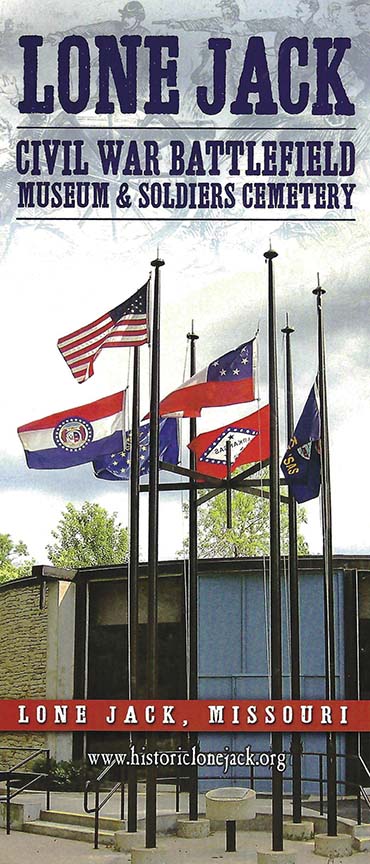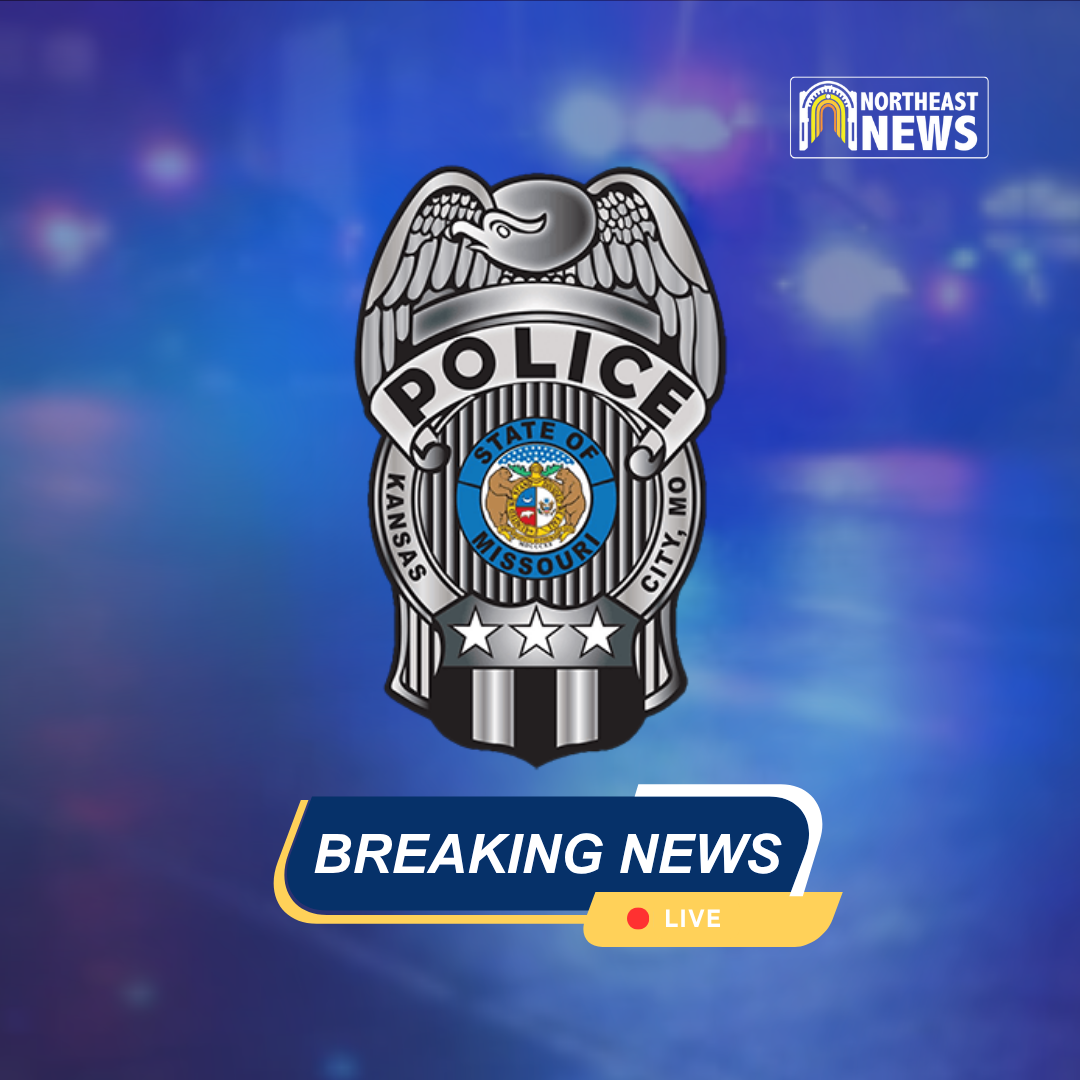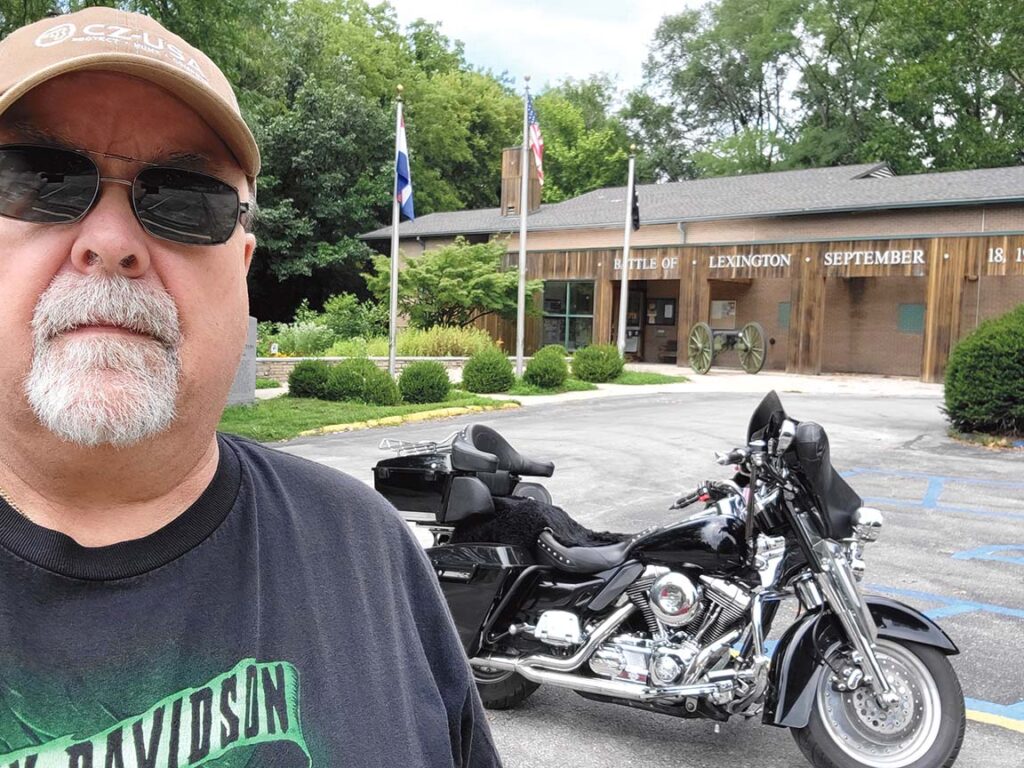
Michael Bushnell
Publisher
For this week’s installment of the Northeast News Day Trip, the Publisher is ridin’ solo on the ol’ chrome pony, headed out to explore some of Western Missouri’s Civil War history. So gear up, get your scoot filled up, and let’s hit the road for a great day exploring some Civil War battlefields along what was known as the Western Border of the American Civil War.
For the four years leading up to the beginning of the Civil War, during the “Bleeding Kansas” years, life on the Western Border was a dangerous proposition, regardless of where your allegiance lay. Abolitionist forces from Kansas made regular raids in to Missouri, burning farms and homesteads of people thought to be pro-slavery.
Pro-slavery Missouri guerrillas retaliated by sacking Free State strongholds such as Lawrence twice in the run up to the war, and again in 1864 in a raid led by William Clark Quantrill that still stands as one of the most vicious attacks of the war.
This two-wheel tour focuses on four key Civil War sites along the Western Border and we start on the south edge of Loose Park, on 55th Street between Wornall Road and Central Avenue, at the Battle of Westport interpretive site.
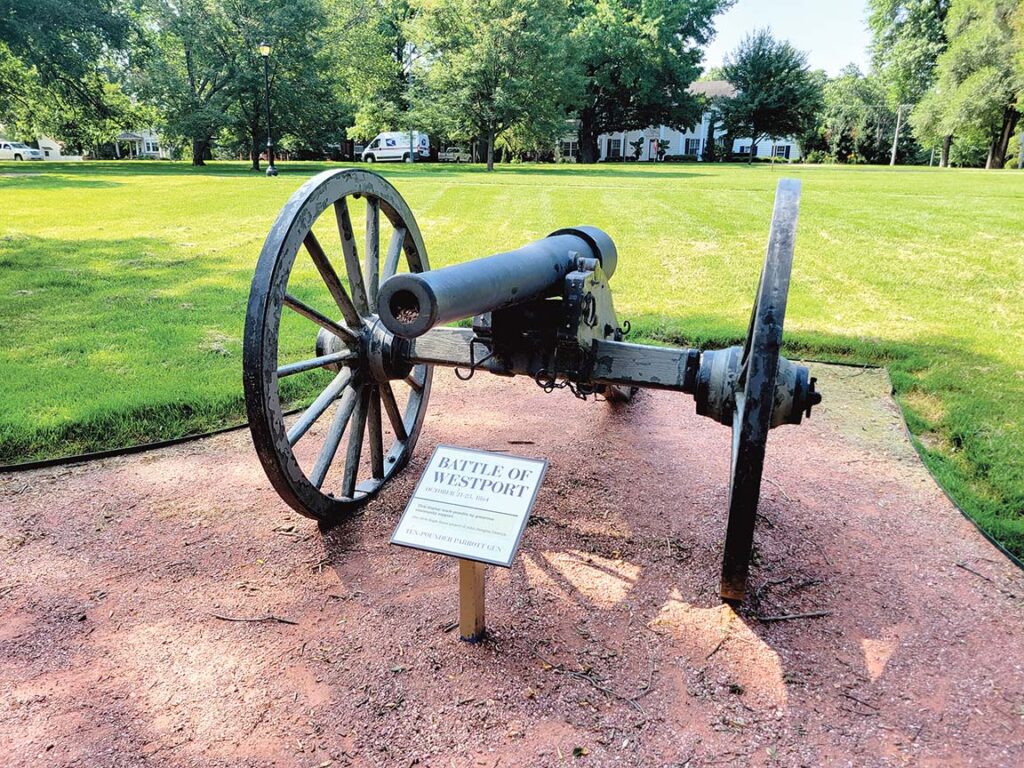
The Battle of Westport, fought between October 21 and 23, 1864, is often referred to as the “Gettysburg of the West,” and was a last ditch effort by Confederate General Sterling Price to finally take Missouri and make it a Confederate stronghold.
In September 1864, Price, with the help of some well-known Missouri guerrillas, began his march north from Arkansas on September 19, with the city of St. Louis in his sights.
Following the raid on Centralia by a squad of guerrillas led by Bill Anderson, Price turned his sights westward toward Kansas City, engaging at Glasgow on October 15 and the second battle of Lexington on the 19th.
Price continued his westward push and on October 21, 22 and 23, engaged Union forces led by General Alfred Pleasonton on the banks of Brush Creek and what is today Loose Park. The battle site is marked on 55th Street by a set of interpretive panels that tell the story of the battle and ultimately Price’s defeat and his retreat back to Arkansas with Pleasonton and the Union Cavalry in pursuit.
Please note that this stop is a park-and-walk site as there’s no designated parking area at the interpretive site.
From The Battle of Westport site, we throttle up and roll east on US-50 for roughly 40 miles to the Battle of Lone Jack Historic Site in eastern Jackson County.
The battle was fought on August 15 and 16, 1862 and is considered one of the bloodiest Civil War battles on Missouri soil. Following the Union defeat at the Battle of Independence, Union commanders learned of a large Confederate guerrilla presence just south of Lone Jack some 40 miles away.
Under the command of General Henry Warren and Major Emory Foster, roughly 800 Union troops made camp late at night on the 15th, awaiting the next move of the guerrillas. The next morning, the battle began in earnest and resulted in a stunning and bloody Union defeat, after a seriously wounded Foster surrendered on the afternoon of the 16th.
The battle site, cemetery and museum are operated privately by the Lone Jack Historical Society. The round, native stone museum building was built in 1966 and a modest $5 admission is charged for adults, $2 for children under 12. A feature of the museum is the large dioramas depicting various Civil War era events in the region.
The battle site is unique in that soldiers who died on the battlefield are still buried in the field where the battle was waged. The site is part of the Jackson County Parks system and is a designated National Cemetery.
From the Battle of Lone Jack historic site, we headed east on US-50 toward Warrensburg where we then cruise north on MO-13 to Higginsville, home of the Confederate Memorial State Historic site.
The site was once the Confederate Soldiers’ Home, a facility that provided housing and comfort to over 1,500 aging Confederate soldiers after the Civil War. Also part of the park is the Confederate Cemetery, the restored chapel, hiking paths, lakes and picnic areas.
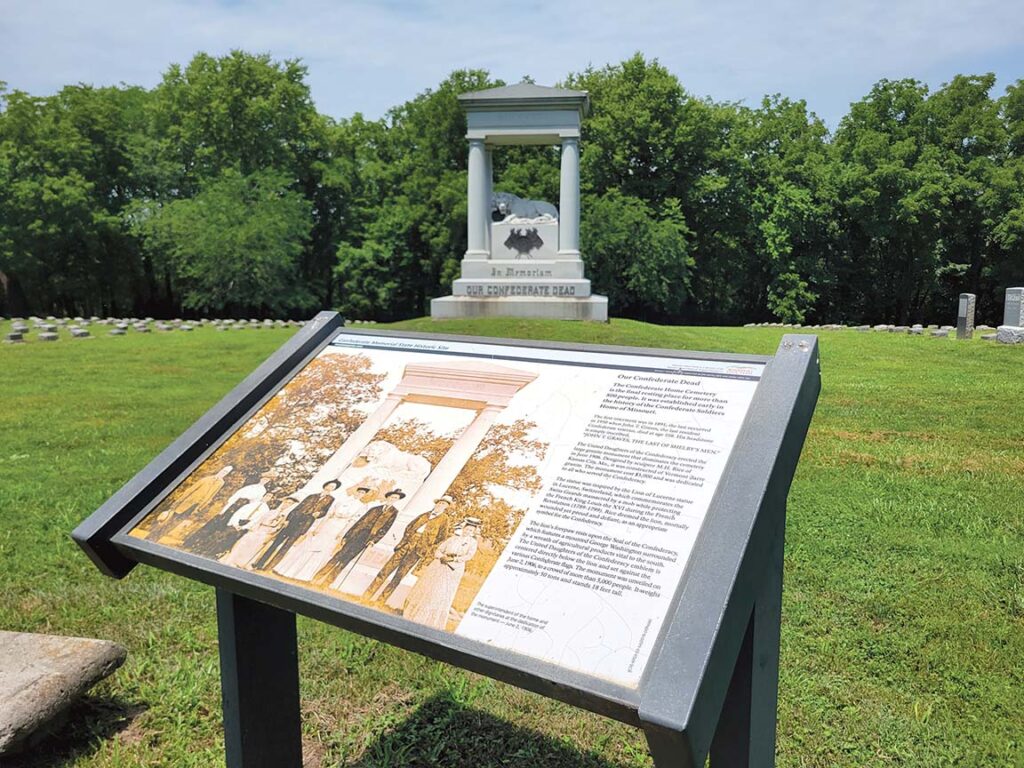
The cemetery is the site of a stone replica of the Lion of Lucerne, dedicated by the Daughters of the Confederacy in 1906. The cemetery is also one of three final resting places of Missouri partisan ranger William Clark Quantrill.
Our final stop, the Battle of Lexington State Historic Site in Lexington, Mo., is a mere 14 miles north of Higginsville. Situated on the bluffs overlooking the Missouri River, the site commemorates the Battle of Lexington fought here in September of 1861.
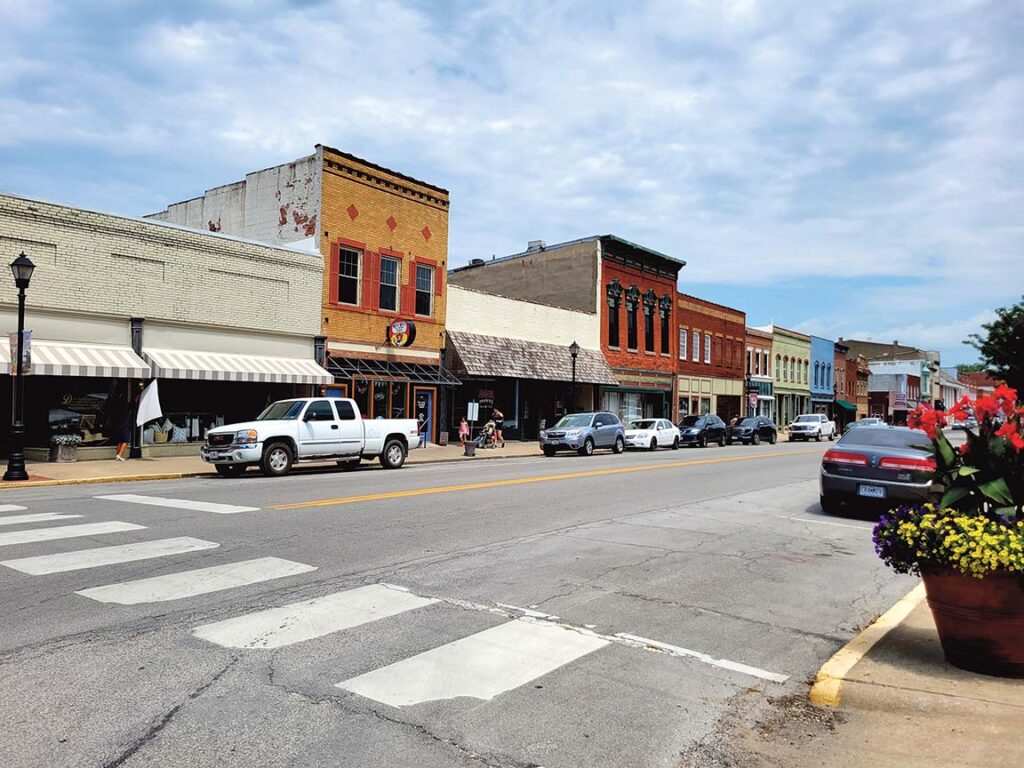
The visitors center offers a comprehensive look at the battle that was also known as the Battle of the Hemp Bales. Hemp was one of the primary crops in the region and when baled for shipping, much like the large round hay bales of today, made a perfect rolling cover for General Sterling Price’s Missouri State Guard troops. The battle is the second significant loss by Union soldiers in the region, the first being the Battle of Wilson’s Creek near Springfield.
When in Lexington, be sure to visit the Historic Lafayette County Courthouse built in 1847. It is the oldest courthouse west of the Mississippi River that is still in continuous use today. A cannonball from the battle is still lodged on one of its columns. Lexington also boasts over 150 public buildings and homes that were built prior to the Civil War and are on the National Register of Historic Places. Stop by the Visitor’s Bureau on Main Street for more information and a free map of the Historic District.
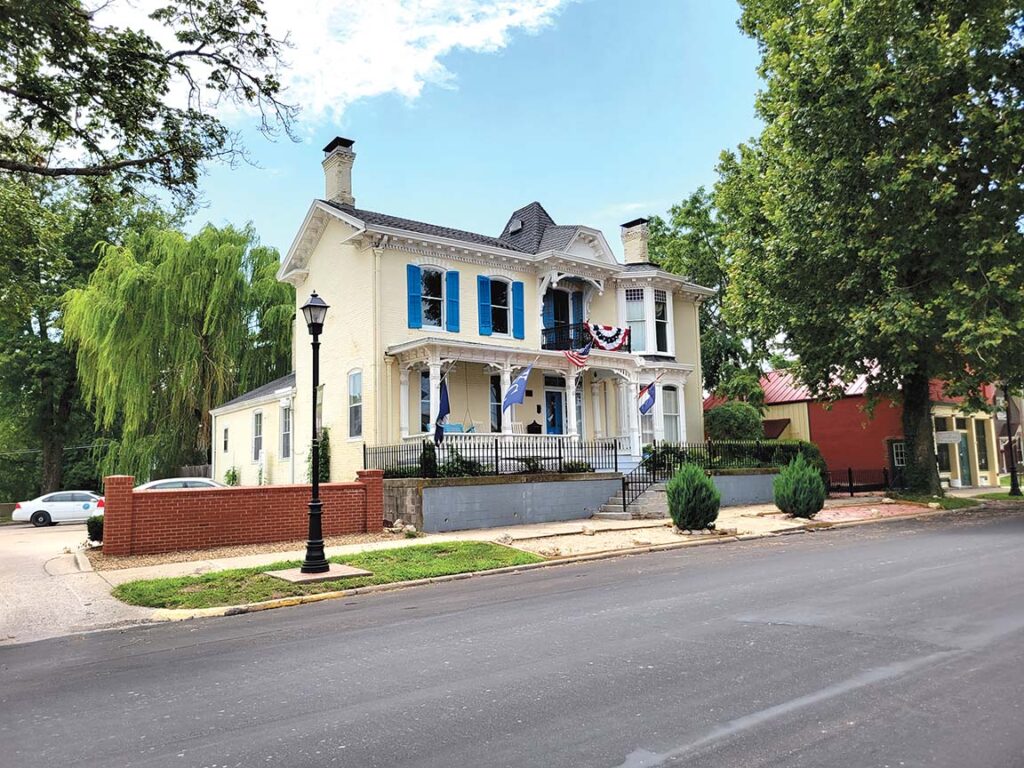
circa 1840-41. On the National Register for Historic Places
No visit to Lexington would be complete without a visit to the iconic Maid-Rite Drive In on Main Street. A loose meat sandwich served up with fries and a drink is a classic piece of Americana.
After a full day of Civil War history, heading back to Kansas City along MO-224 along the Missouri River is a great way to finish the day. The rural two-lane road runs through Wellington and Napoleon, rejoining US-24 about five miles east of Buckner.
As far as mileage is concerned, we have a five-gallon tank on our 2002 Harley Davidson Electra Glide and this tour is a shade over 150 miles meaning it’s doable on a single tank of fuel. We stayed off the interstate for the duration of the tour and, with the exception of US-50 highway between Kansas City and Lone Jack, kept to the two lane roads.
For those making this tour on a motorcycle, with the exception of the Lone Jack parking lot, all of the access roads to the parks are fully paved and largely flat with ample parking for both cars and bikes. Total cost for the day including museum entry fees, food and fuel was well under the $50 mark for one person.
VISIT LEXINGTON, MISSOURI
Battle of Westport Visitors Center, Harris-Kearney House,
4000 Baltimore Ave,
Kansas City, MO 64111
https://battleofwestport.org/self-guided-tours
Battle of Lone Jack Historic Site,
301 S Bynum Rd,
Lone Jack, MO 64070
Confederate Memorial State Historic Site,
211 W 1st St #8158,
Higginsville, MO 64037
Battle of Lexington State Historic Site,
1101 Delaware St,
Lexington, MO 64067
SUGGESTED READING:
Kansas City Public Library,
Missouri Valley Special Collections,
civilwaronthewesternborder.org
The Battle of Westport,
© 1996, The Westport Historical Society
Guerrillas and other Curiosities: Bud, Donnie & Me
by Samuel Anderson Pence,
© 2008, Two Trails Publishing, Independence, MO
Two works edited by former Lykins Neighborhood President and noted local Historian Harold Dellinger:
Black Flag: Guerrilla Warfare on the Western Border, 1861-1865
Jesse James: The best writings on the notorious outlaw and his gang,
© 2007, Morris Book Publishing LLC


